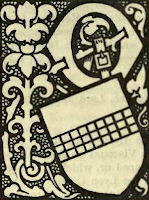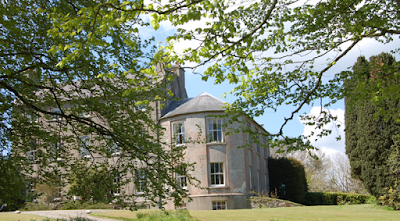This family descended maternally from BOYD, of Glastry, County Down, who claimed to be a branch of the Kilmarnock family.
RICHARD KEOWN, of Downpatrick, County Down (son of Richard and Margaret Keown, m 1768), married Mary (who assumed the name of BOYD, as heiress of the Boyds of Glastry and Portavogie), daughter of Henry Keown, and had issue,
John, JP, barrister;The third son,
Henry, a military officer;
WILLIAM, of whom hereafter;
Mary, m WILLIAM BEERS;
Margaret;
Anne, m George Gulliver;
Isabella, m Dr R Boyd.
WILLIAM KEOWN JP (1816-77), of Ballydugan House, County Down, High Sheriff of County Down, 1849, MP for Downpatrick, 1867-74, wedded, in 1845, Mary, eldest daughter of the Rev Robert Alexander, Prebendary of Aghadowey, County Londonderry, and had issue,
RICHARD, his heir;Mr Keown assumed the surname of BOYD in 1873, under the will of his grand-uncle, Major David Hamilton Boyd, of Glastry.
Robert;
William;
John Maxwell;
Alfred Henry;
Edmund Walter;
Mary; Matilda Catherine; Hilda Margaret.
The eldest son,
RICHARD KEOWN-BOYD (1850-), of Ballydugan and Glastry, Lieutenant, Royal Navy, married, in 1875, Florence, fourth daughter of Charles Manners Lushington MP, and had a daughter,
SYLVIA IRONSIDE KEOWN-BOYD, who espoused, in 1927, Sir Denys Henry Harrington Grayson, 2nd Baronet.
They divorced in 1937.
BALLYDUGAN HOUSE, near Downpatrick, County Down, is a three storey, five bay, Georgian house of ca 1770.
The estate lies close to BALLYDUGAN LAKE and flour mill, and the disused railway line, one of my favourite places in the county.
A two-storey, bow-fronted wing was added about 1815.
The estate today comprises about 750 acres.
Ballydugan has changed ownership on a number of occasions: from its origins in the early 17th century when Thomas Cromwell, Earl of Ardglass, granted the lands to the Wests; to 1819, when ownership changed to the Keowns.
Richard Keown was a shrewd solicitor from Downpatrick, who purchased most of the property between 1790 and his decease in 1829.
Mr Keown bequeathed Ballydugan to his second son, John.
Following Richard Keown, two more generations of Keowns occupied the house till 1906.
In 1844 it was let to Major Stephen Percival-Maxwell, and in 1906, following Richard Keown-Boyd's bankruptcy, Stephen Percival-Maxwell took the opportunity to purchase Ballydugan House and demesne.
Mr Perceval-Maxwell died in 1935, and as his only son Nigel was killed in action in France, his wife Henrietta ‘Mabel’ (nee Richardson) was given her life in the house before their nephew Gerald Henry Aubrey Percival-Maxwell moved in.
Major Percival-Maxwell was High Sheriff for County Down in 1957.
The Percival-Maxwells remained on the estate until 1965.
Captain James Christy Brownlow (1922-2006), High Sheriff of County Down, 1971, purchased Ballydugan circa 1963 and remained there for the next fifteen years.
Captain Brownlow was the younger brother of Colonel William Brownlow, of BALLYWHITE HOUSE.
The estate was sold in 1978 to Sven and Simone Mackie, who had come from Snipe Island, a ruined beetling mill in Dunadry that they had restored.
Sven had been a sales director in the family business, James Mackie & Sons, travelled extensively, and spoke fluently in French, German and two dialects of Italian.
After Sven’s death in 1986, Simone later married their long-time friend John Beach who had been land agent to the O’Neills at Shane’s Castle and previously worked for the Vestey family in East Anglia.
Simone now manages the estate with her grandson, Edward Manningham-Buller.
Stuart Blakley has written a piece about Ballydugan here.
The demesne was established in the 18th century.
There are mature shelter trees and woodland.
The walled garden is not cultivated but there is a very large English yew flourishing in the centre.
A maintained ornamental and productive garden is near the house.
The gate lodges have gone.
This site lies to the south of a much larger demesne, Hollymount, which has completely gone.
There are remnants of a fine oak wood on the east side, amongst forest planting.
The Keown-Boyd mausoleum of ca 1825 remains in very good condition.
First published in March, 2016.




No comments :
Post a Comment